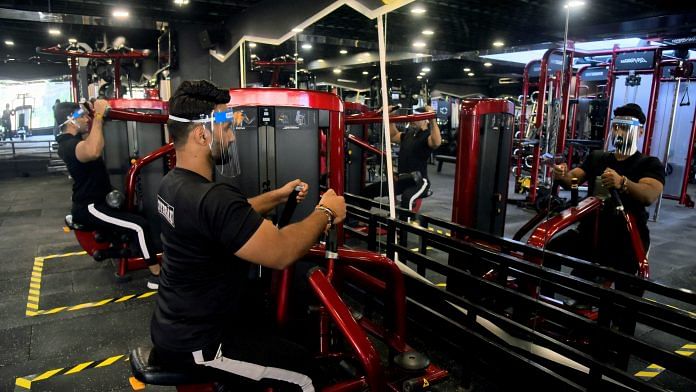
Thank you dear subscribers, we are overwhelmed with your response.
Your Turn is a unique section from ThePrint featuring points of view from its subscribers. If you are a subscriber, have a point of view, please send it to us. If not, do subscribe here: https://theprint.in/
The pandemic isn’t over yet but it will be. It is then we need to ask ourselves the three hard questions: how did we get here, why did it take us so long to get out and most importantly what amends do we make so that when the next pandemic comes around, the story is different.
This piece provides some thoughts on the third part i.e. what needs to change. For the more fortunate amongst us, 2020 provided an opportunity to slow down, reset and reflect on things that were really important to us.
One such thing in particular was “our physical health”. Fitness, immunity and mental well-being are all interrelated. The link between obesity and Covid-19 has been studied extensively, this meta-analysis1 concludes that individuals with obesity were at a significantly higher risk of not just contracting Covid-19 but also of hospitalization and mortality. We need to take some action both individually and collectively as a people to remedy the situation.
What we can do an individual level: We are aware of the phrase “a healthy mind lives in a healthy body”, as the official seal of AIIMS also states “शरीर माध्यम खलुधर्म साधनम”्. A look around reveals that we are anything but healthy, we have normalized being overweight or obese as a lifestyle disorder. A simple google search reveals staggering projections for percentage of overweight and obese population in the coming two decades
- Engaging in activities that promote our physical well being needs to be actively encouraged. Whether we go for yoga, a workout in the local gym, or exercise at home, what is important is engaging in it consistently. Conversations around fitness and strength should be a part of our day to day interactions. About 20 years ago, on one of my first visits to the U.S. a coworker asked me “so..what sport do you play?” It was a serious question asked casually and I had no answer because I did not “play” any sport and there was nothing odd about it (to me at least).
We need to have an answer to that question if we want to be a young population that is fit & strong (fast forward to current day, my answer to that question is “strength training”). While the benefits of a good workout for the body are obvious, there is a mental aspect to it also. A good workout does even more for the mind than it does for the body. The body releases chemicals called endorphins when we exercise, these endorphins create a general sense of positivity and euphoria. When we try to increase positivity just by thinking positive, it might work if we are skilled at it but using physiological processes to drive a sense of well-being might offer an easier pathway. The sense of accomplishment that we get after finishing a workout sets us up in a positive mental frame that then carries over to the entire day. The effects of a good workout for the mind in terms of neuroplasticity have been studied3 and found to be beneficial.
Where can communities, corporates and local governments help: good health practices need to be encouraged and incentivized at a government and community level as well. Now there is both more awareness and more interest in fitness, but we need to translate that into concrete action.
Funding high-risk high-reward research in health is something only governments have the financial muscle to do and so they should4. Communities and local governments should spend real money in making gyms and sports centers ubiquitous.
These centers should be well stocked with high quality equipment, have certified trainers and above all should be safe and welcoming for everyone no matter where they are in their health journey. I am no public policy expert but I would like to believe that the money spent in building health and fitness infrastructure would pay for itself many times over when it saves the population from the next pandemic. Corporates also have a role in this because they have a stake in their employees health.
A healthy employee is a more productive employee. Having a gym at the workplace is not the end but a starting point! Making personal trainers available to the workforce, subsidizing gym memberships, reimbursing purchases of fitness equipment so that employees can train at home will definitely increase employee engagement.
Fitness is an infinite game, no matter where we start we can only get better, there is no final goal post to reach, only constant and incremental improvements to make. If the last 15 months have taught us one thing, the cost of not making investments in health and fitness is orders of magnitude higher than the cost of making them.
Also read: SubscriberWrites: ‘Democracy 2.0’ — A new definition of democracy is needed in changing times
These pieces are being published as they have been received – they have not been edited/fact-checked by ThePrint.

COMMENTS